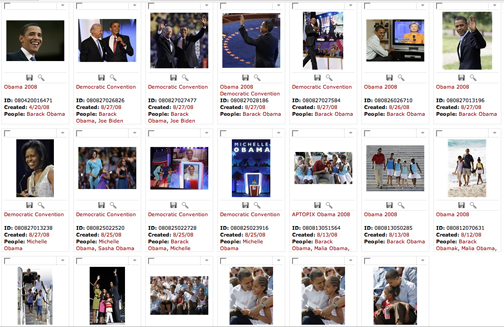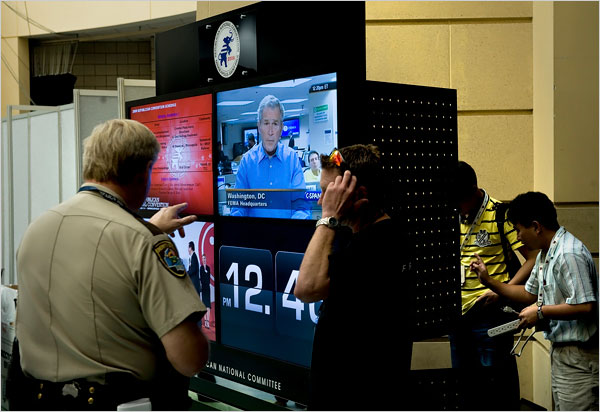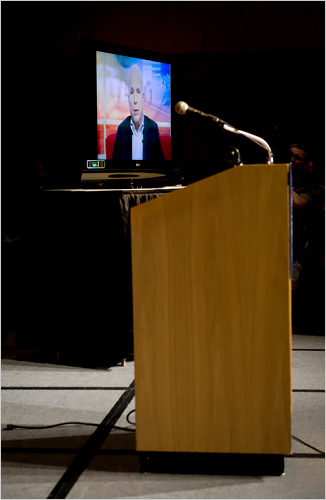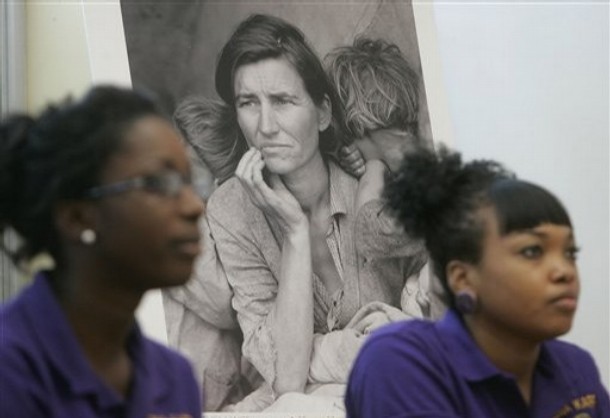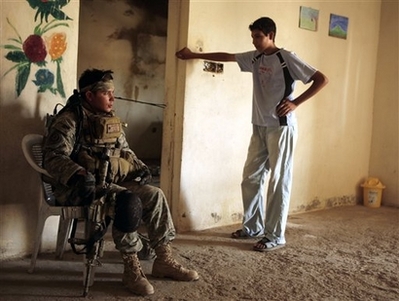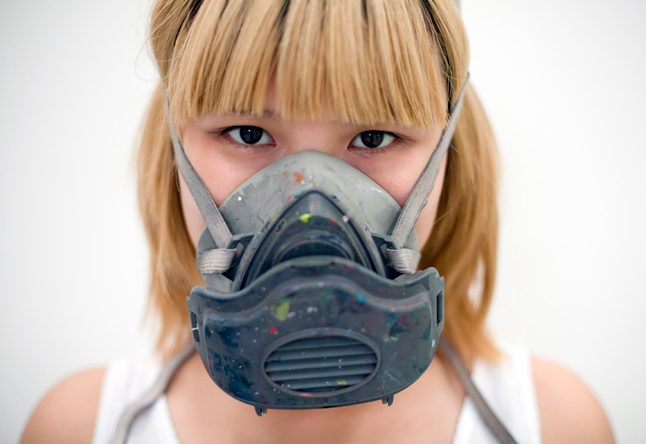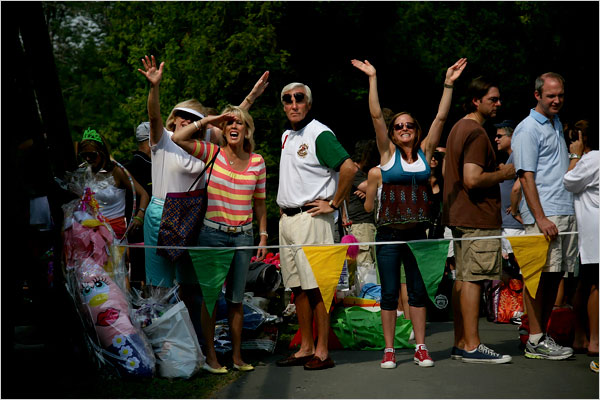Guest post by Aric Mayer
A page on the AP photo website, where a search for “Obama” yields 20,652 publishable images, or 1,033 pages just like this one.
A former colleague of mine is a photo editor at a weekly magazine. In the normal course of her job she edits a section that requires her to review up to 18,000 images a week to publish fewer than 20. Most of this editing takes place over the course of two days. As she goes through these images that are coming in off of the open wire, she knows that her competitors are looking at the same images as well. If she misses one great image that is picked up by another magazine, there is going to be some answering to do. Talk about pressure. There is a kind of marathon quality to the performance. I’m not even sure the human brain has evolved yet to handle this much volume in visual stimuli.
The technical way that almost all photo editing gets done these days is through editing programs that allow hundreds and thousands of images to be searched for by keywords and then browsed through as thumbnails. See something you like, double click on it and you get the full size preview. And here is the limiting factor. Almost any image going through this system must have some appeal as a thumbnail or it is almost sure to be overlooked. In other words, if your image doesn’t look good at one or two inches on a computer screen, it isn’t likely to make it through the editing process at all.
Due to the volume that editors are handling under tight deadlines, this is a necessary evolution. It also is a great limiting factor on the kind of work that gets published. Loud, colorful, graphically dramatic work tends to win the day. Quieter, more complex work has a tough time competing on this level because it doesn’t work at that size and in that format. We can look to another related medium, painting, to see more clearly how this works.
An early lesson that a beginning painter must learn is that scale and format really do matter. Before a painting begins, the shape and size of the surface have to be determined, and those decisions will influence the effect of the painting right through to its completion. The next lesson is that painting a larger painting is not at all like making a small painting. Increasing scale changes everything.
On the larger scale, detail at the surface level is the same only there is a lot more of it, and to make an integrated piece the detail must be related to the entire piece. Which is to say that making an 8 foot by 10 foot painting requires approximately 144 times the attention to detail than an 8 inch by 10 inch painting, since the larger painting has that much more surface area.
But, making the larger painting is not like making 144 of the smaller ones, because the entire surface must come together to make a whole. All the ingredients, including the scale, must be necessary for it to work.
What does this mean for photography? Making a bigger photograph is very different than making a smaller one. Scale matters, but the ingredients in the photograph must require that scale in order for it to be necessary. There must be sufficient detail, resolution, and interest in the photograph to hold up at scale. Since venues for larger images are shrinking while smaller images get into distribution easily on the web, the aesthetic of the thumbnail is winning the day.
Consider also the tonality of the image. Printing photographs on paper is a master craft, as is making color separations for CMYK printing in magazines. In each case, the final viewing experience is largely under the control of the printer. Not so on the web.
A few years ago I went to the opening of a gallery show exhibiting some recent photojournalism. Many of the images were familiar from their appearance in popular magazines. What was surprising to me was that the images, printed at 30×40 inches, in many cases appeared to have less impact at that size than they did at full page and double truck sizes in the magazines. On the wall they started to fall apart. The scale wasn’t necessary for the final object.
Years of working in 8.5×11 or 11×17 as maximum scale had made those photographers maximally effective in that format. With one notable exception–all work shot with a Leica on black and white negative. The grain just got sexier as it went up in size. The compositions were tight and the teeth of the film carried through. Digital images blown up past their prime need real help to make it. They tend to lose surface appeal.
The web is one of the easiest ways to distribute photography and it is one of most limiting ways to view it. Almost all of the problems I have detailed above play out over the web. Images have to be small to be viewed properly. There is significantly less detail in most computer monitors than there is in a finely made print. Each step of the way something is thrown out. By the time the image reaches you on the other end of this computer exchange, it is but a shadow of its real self– the final, beautiful, nearly perfect print.
